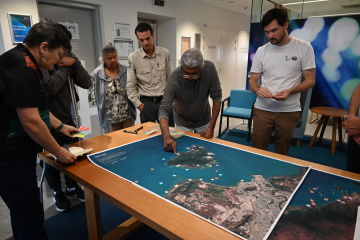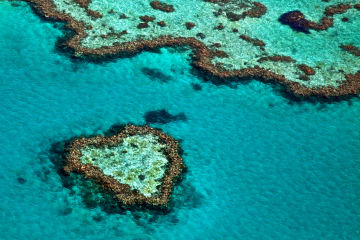News ·
Embedding Traditional Owner participation into dolphin monitoring on the Reef
A team of researchers from Southern Cross University and Flinders University are working with Traditional Owners to help better understand and protect the dolphins of the Great Barrier Reef.
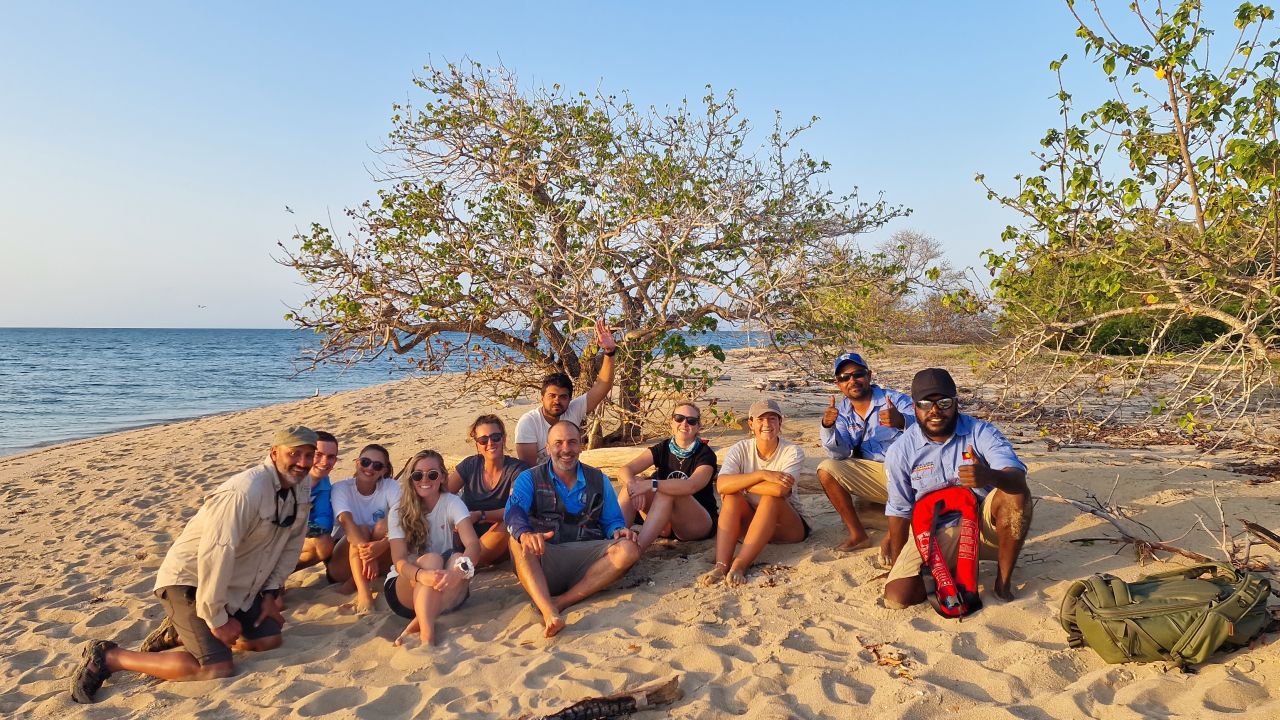
Dolphins are an iconic species that are deeply significant to many who call the Great Barrier Reef and its catchments home. When most people think of dolphins they picture the charismatic bottlenose, but did you know there are other species that inhabit the Great Barrier Reef?
Little is known about two species in particular: the Australian snubfin dolphin and the Australian humpback dolphin. These species live close to the coast and are typically found in small groups near estuaries, rocky reefs and sheltered bays. Because they often inhabit waters with high levels of human activity, these dolphins are increasingly vulnerable to impacts from activities such as boating and netting.
With our partners, we’re working to address critical knowledge and data gaps about inshore dolphin populations in the northern Great Barrier Reef, in close collaboration with Reef Traditional Owners. The focus is on the Australian snubfin dolphin, Australian humpback dolphin and Indo-Pacific bottlenose dolphin.

Three mother and calf Australian humpback dolphins. Credit: Great Barrier Reef Dolphin Project
An ambitious engagement program
As the project lead, Southern Cross University’s Dr Daniele Cagnazzi has undertaken an ambitious engagement program with Traditional Owner groups from north of Cairns to Cape York, Queensland. Over a 22-month period, Daniele and his team met with each of the groups to discuss their research and seek FPIC (Free, Prior and Informed Consent). Historically, Traditional Owners have not been consulted or informed prior to scientific research and other monitoring activities occurring on their land and sea Country. Engaging with Traditional Owners in meaningful ways prior to projects commencing, as well as taking the time to receive feedback and discuss plans is a vital part of reconciliation action and broader system change.
“Traditional Owner engagement was an area that I wasn’t particularly expert in. However, the project team included Dr Helen Penrose who has extensive expertise in Traditional Owner group engagement. During the first year of the project, we would initially go out together. From the second year, I continued the engagement by myself,” said Daniele.
The key learning Daniele took away from the experience was a deeper understanding of the different types of knowledge that collaborative efforts bring together.
“Western science and Indigenous science are quite different to each other. They work on different time frames, with differing priorities and baselines. It was very important to understand that and learn how best to work with two different types of doing science. In a way, it was about seeing western science, which I’m very used to, through different eyes as it allowed me to communicate the same information in a new way. Learning how to engage people, what to focus on and how to listen were fundamental to that,” said Daniele.
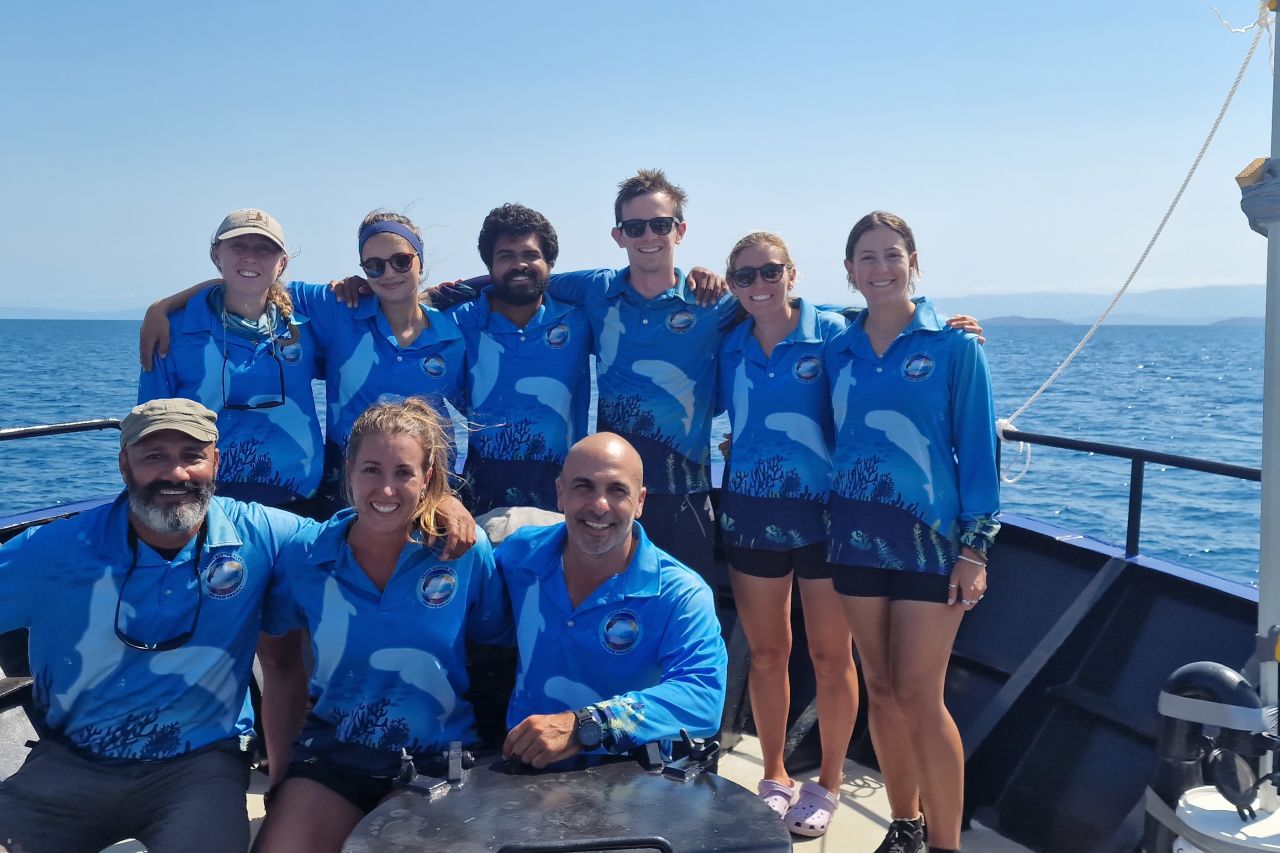
Meet the team, from left to right: Dr Grace Russell, Giorgia Marzorati Hansika Badhuge, Dr Jonathan Syme, Sarah Pokelwaldt, Caitlin Nicholls, Dr Guido J Parra, Valeria Serafini, Dr Daniele Cagnazzi. Credit: Great Barrier Reef Dolphin Project
Completing collaborative surveys and monitoring
Following this first phase, 12 Traditional Owner groups engaged fully with the project and provided FPIC to conduct monitoring on Country. The survey area crossed multiple sea Countries. For each sea Country the team welcomed on board two Traditional Owners representing the local group.
In October 2023 the team, which included project co-leader Dr Guido Parra Vergara (Flinders University) and PhD candidates Valeria Serafini and Hansika Badhuge, completed the data collection phase of the project after 56 days out at sea. They used monitoring and remote sensing techniques to understand the distribution and abundance of inshore dolphin species in the northern Great Barrier Reef. They also mapped and assessed the threats to these dolphins across the entire Reef.
“Two months out at sea is a long time. It requires mental and physical strength, but with the help of a great team lead by Valeria Serafini we managed to successfully complete the project and collect data that will change what we know about inshore dolphins on the Great Barrier Reef,” said Daniele.
“We surveyed all the planned 98 transects covered more than 2,500km searching for dolphins and recorded almost 300 marine mammal sightings. Hansika also recorded the first video of Australian humpback and snubfin dolphin in the northern Great Barrier Reef,” Daniele added.
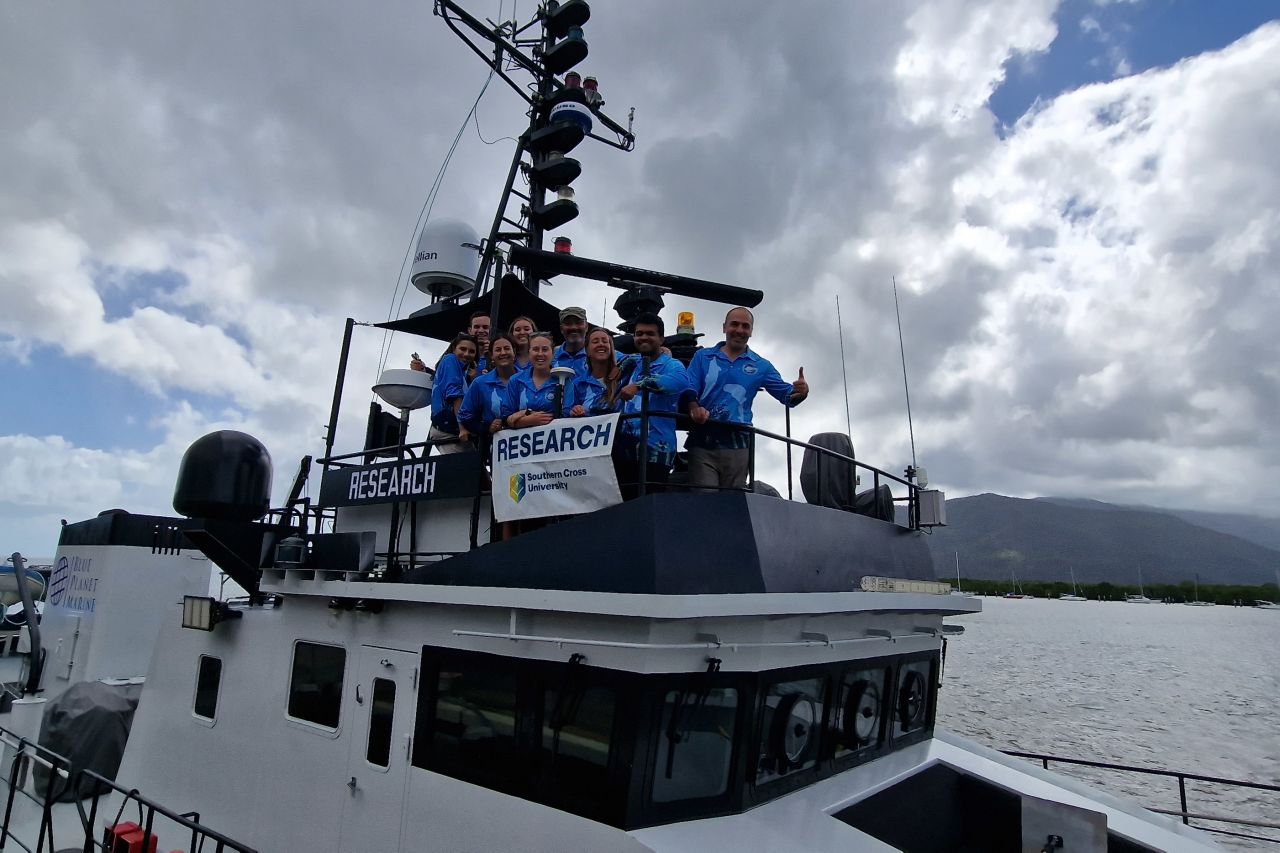
The Great Barrier Reef Dolphin Project Team ready to leave the harbour toward the remote northern Great Barrier Reef. Credit: Great Barrier Reef Dolphin Project
Due to the remoteness of the study area, pick up and drop off were challenging, often requiring landing helicopters on remote beaches. Traditional Owners were directly involved with the data collection and became part of the observational team scanning for dolphins throughout the day.
“The presence of Traditional Owners on board gave the entire research team a sense of belonging and connection to the land and the water. We felt like welcome visitors to this beautiful land,” said Daniele.
The team’s efforts did not go unnoticed. Alison Liddy, TUMRA Co-ordinator, Lama Lama Sea Country reflected: “This is one of the first times marine researchers have engaged directly with Traditional Owners on a project in our Sea Country. From start to finish, Daniele was fully involved in the work and discussions with us and all our meetings proceeded as planned. Any cultural sensitivities were respected. The video findings and photos were amazing and we are so happy that the significance of Princess Charlotte Bay Lama Lama sea Country was highlighted through this project. In particular, the evidence of the snubfin in our Country. Our Rangers who joined the team of researchers on board the vessel enjoyed the opportunity.”

Small boat survey set up in the shallow waters of the northern Great Barrier Reef. Credit: Great Barrier Reef Dolphin Project
Clayton Enoch from Wuthathi Aboriginal Corporation added: “It was great having the team out on Country and learning about different species of dolphins between Captain Billys and the Olive River, Wuthathi Country. Unfortunately, the snubfin dolphin was not to be seen but we are ready to get on board again for the next trip to try find them. The crew onboard were great and very respectful, and we thank them for respecting us and our Country by doing the right thing. The meals were great, and it was good how everyone worked together to make the trip enjoyable and to get home safe and sound.”
After the fieldwork, the collaboration with Traditional Owner groups continues with a series of post-survey meetings to discuss the survey results and future collaborations. In the next six months the team will also be busy with data analysis, which includes determining abundance and distribution of inshore dolphins in the northern Great Barrier Reef. Data collected through this project will change our understanding of threatened inshore dolphin in the northern Great Barrier Reef and may have implications on their conservation status in Queensland and Australia.

A snubfin dolphin swimming in the pristine waters of the Northern Great Barrier Reef. Credit: Great Barrier Reef Dolphin Project
Acknowledgements
This project would not have been possible without the help of all Traditional Owners who participated in the Great Barrier Reef dolphin survey (Geardon Neal, Baizam Thompson, Grant Omeenyo, Nguumpii Rocky, Marco Wilson, Jordan Solomon, Lequeisha Charlie, Robin Solomon, Kyguan Accom, Davis Hobbson, CM, Esmond Cobus, Fredrick Deeral), the research assistants (Grace Russell, Jonathan Syme and Caitlin Nichols), the volunteers (Giorgia Marzorati and Sarah Pokelwaldt) and the boat crew.
The team would like to thank all Traditional Owner groups involved: Alka Bawar (Kalpowar) Aboriginal Corporation; Cape Melville, Flinders Group and Howick Aboriginal Corporation; Dabu Jajikal Aboriginal Corporation; Gamaay Aboriginal Corporation; Gudang Yadhaykenu Native Title Aboriginal Corporation; Hopevale Congress Aboriginal Corporation; Kuuku Yaú Aboriginal Corporation; Ngana Malngkanichi pama (CNCRM) Aboriginal Corporation; Nyiimuchin Aboriginal Corporation; Uutaalnganu Aboriginal Corporation RNTBc; Wuthathi Aboriginal Corporation; and Yintjingga Aboriginal Corporation.
Top photo: A well-deserved break on Burkitt Island after many days at sea, welcomed by the Yintjingga Aboriginal Corporation rangers. Credit: Great Barrier Reef Dolphin Project

